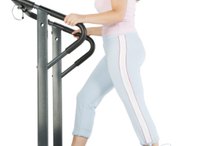How to Strengthen Your Lungs
If you are living with a chronic obstructive pulmonary disease (COPD) such as emphysema, asthma, bronchitis or another breathing problem, you may be looking for ways to strengthen your lungs to help you breathe easier. You may also be looking for exercises for the lungs if you are a runner, a swimmer, or if you participate in aerobic activity and need more stamina. Simple breathing techniques can increase the strength of your lungs.
Participate in aerobic activities. Do an aerobic activity such as walking, dancing, biking or swimming at least five days a week for 30 to 60 minutes each time. For best results, do a variety of activities, as each one works your body differently. When you do cardiovascular exercise, you strengthen the muscles that surround your lungs, as they must work harder to supply your body with oxygen. With time, your respiratory system becomes more efficient. You will notice after a few weeks that you will not get as out of breath climbing stairs or walking uphill. Like any muscle in your body, when you exercise your respiratory muscles, they get stronger.
Exercises to Get Rid of a Muffin Top
Learn More
Do a daily deep breathing exercise. Deep breathing exercises strengthen your lungs. During aerobic exercise, deep breathing challenges your lungs to work harder to process the extra air you are taking in. As you inhale through your nose, allow the stomach to move outwards. This allows the diaphragm muscle to drop down so that the lungs can fully expand. Exhale through the nose, and let the stomach move inwards. This will make the diaphragm muscle contract, which will assist the lungs in pushing the air out. If you have sinus or respiratory issues, you can inhale through the nose and exhale through pursed lips. Aim for 10 to 15 minutes of deep breathing each day, and focus on making each breath a little deeper and a little slower.
Add resistance. To strengthen your lungs further, do your deep breathing exercise against some kind of resistance. If you have a stretchy exercise band, wrap the band around your chest and hold it with your hands, so it is snug around you. As you inhale, your lung muscles will have to push against the band to expand. Exhale slowly. Or rest a light ankle weight on your chest and one on your belly and try to move the weights as you inhale and exhale.
Tips
Doing the deep breathing exercise may feel awkward at first, as there is a tendency to pull the stomach muscles in when you inhale. With practice, this style of breathing will become more natural.
Warnings
Start slowly, and build up to 10 to 15 minutes a day, especially if you are using resistance, to avoid making your respiratory muscles sore.
Related Articles
References
- American Academy of Orthopedic Surgeons : Aerobic Exercise
- Cleveland Clinic:Diaphragmatic Breathing
- Holloway EA, West RJ. Integrated breathing and relaxation training (the Papworth method) for adults with asthma in primary care: a randomized controlled trial. Thorax. 2007;62(12):1039-42. doi:10.1136/thx.2006.076430
- Holland AE, Hill CJ, Jones AY, Mcdonald CF. Breathing exercises for chronic obstructive pulmonary disease. Cochrane Database Syst Rev. 2012;10:CD008250. doi:10.1002/14651858.CD008250.pub2
- Yamaguti WP, Claudino RC, Neto AP, et al. Diaphragmatic breathing training program improves abdominal motion during natural breathing in patients with chronic obstructive pulmonary disease: a randomized controlled trial. Arch Phys Med Rehabil. 2012;93(4):571-7. doi:10.1016/j.apmr.2011.11.026
Resources
Writer Bio
I hold a Master's degree in exercise physiology/health promotion. I am a certified fitness specialist through the American College of Spots Medicine and an IYT certified yoga teacher. I have over 25 years experience teaching classes to both general public and those with chronic illness. The above allows me to write directly to the reader based on personal experiences.









